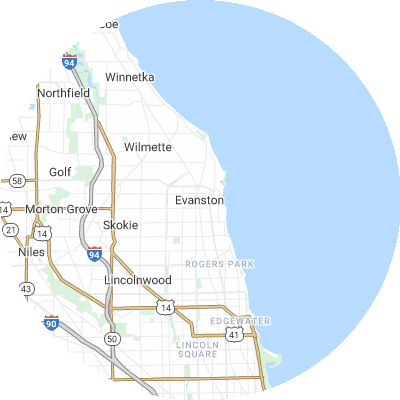Signs You May Need Gutter Guards
While gutter guards aren't always required, indicators of clogged gutters are usually clear. Signs of chronic gutter problems include:
- Leaky joints or seams where water leaks out of gutters
- Visibly saggy, damaged, or misaligned gutters that no longer direct rainwater correctly
- Frequent clogs that cause overflow and water to spill over gutters
- Mold growth, peeling exterior paint, or interior water stains on walls near gutters.
- Soggy ground or visible erosion around your home's foundation
How To Choose a Gutter Guard Installer
Assess Their Experience
When selecting an installation company, look for one with extensive experience and knowledge about numerous brands and guard types. An experienced company will understand how to measure and fit gutter guards for your specific needs. Check a company's years of experience and request referrals from local customers.
Verify Proper Licensing and Insurance
Verify that any businesses you're considering are properly certified, bonded, and insured, with both general liability and workers compensation policies. This shields you from liability for potential injuries and accidents. Request current licensing and insurance papers from any potential providers.
Choose Reputable Brands
Seek out companies that offer leading reputable gutter guard brands such as LeafFilter and Gutter Helmet. Be wary of companies only offering generic no-name or their own off-brand guards, as these likely do not have the same rigorous testing as reputable national brands.
Seek Custom Fit Services
Guards should be custom fitted on location to match your gutters. Choose a company that specifically measures and trims guards for your home rather than using one-size-fits-all guards. Guards fitted for your home leave no gaps for debris accumulation.
Examine Warranties
Leading gutter guard installers normally offer 20-year or lifetime warranties that protect against clogs, rust, leaks, and other problems. Before picking a company, carefully read through the warranty terms for materials and workmanship guarantees. Warranties are an excellent means of protecting your gutter investment.
Check Reviews and Referrals
Take some time to look at online reviews on sites such as Google Reviews, Yelp, or the Better Business Bureau (BBB) to hear more about customer experiences. You can also ask neighbors to suggest quality local gutter guard companies. When researching providers, we'd recommend going for companies with a history of good reviews instead of just one or two reviews.
Types of Gutter Guards
The six most common gutter guard types are as follows:
- Foam guards consist of pieces of foam that sit in your gutters to stop debris. They're lightweight and easy to install. Foam guards cost around $2.46 per linear foot.
- Brush guards are just what they sound like: large brush bristles that sit in your gutters to let water through while blocking debris. Brush guards cost roughly $4.04 per linear foot.
- Screen guards have large holes that allow water through while stopping debris. Screen guards cost around $4.28 per linear foot.
- Mesh guards stop debris but allow water to flow through. Mesh guards have even smaller holes than screen guards. They're durable and let debris slide off as opposed to sitting on top of the gutters. Mesh guards cost around $4.05 per linear foot.
- Micro-mesh guards are typically the most effective. Micro-mesh guards have smaller holes than regular mesh guards, which lets even less debris through. Micro-mesh guards cost around $5.13 per linear foot.
- Surface tension guards, also called reverse curve guards, use surface tension to allow water to flow into your gutters while debris slides off. Normally, they will be visible from the ground. On average, you can expect to spend $3.15 per linear foot for surface tension guards.












